Ah, Commodore 64. That name may not sound too familiar to those from the US. Yet, in Europe, that breadbin-shaped home computer smashed all sales’ records! In some countries, like my own Italy, every kid with even a faint interest in programming or video games, had a 64 at home. Of course, the fact that there was a huge piracy market (especially for cassette tape games) could’ve helped the sales. However, the Breadbin was still an amazing computer! Great price, solid specs, robust and always “READY”. But, what about its games’ library? Well, let us take a look at some of the most interesting turn-based RPGs & Strategy games available on Commodore 64.
ARCHON – THE BEST CHESS GAME EVER?
Rather appropriately, the first turn-based game that comes to mind is Electronic Arts’ Archon: The Light & The Darkness. Archon being the title of the first ruler of the kingdom in Ancient Greece. Developed and published in 1983 by Free Fall Associates, Archon may seem like some complicated chess variant. Yet it offers an interesting spin on that classic kind of turn-based gameplay. The two opponents – appropriately named “light” and “dark” – actually have their own, unique pieces. These have distinct movement patterns as well as unique sets of abilities.
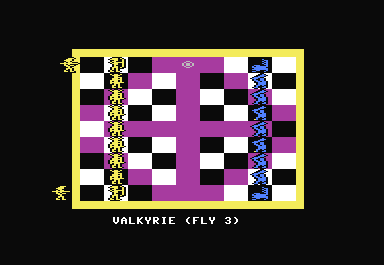
Learning what each piece does is a key to victory. Especially since no capture is done without a true fight to the death. It is crucial to always maintain a balance of power in the various battles going on. In addition, each side has different spells that they can use any time they want. These include reviving a fallen piece or altering the course of time (shifting the cycle to the player’s advantage). Without any storyline, Archon offers fantastic battles, inventive pieces and a still unique mix of turn-based and real-time combat.
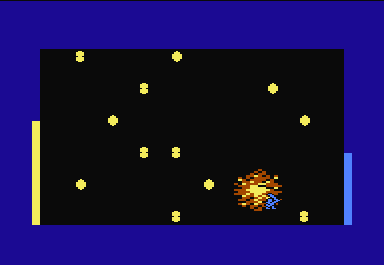
Archon was followed by a sequel, Archon II: Adept, released in 1984. It added more complex elements to the gameplay, like a board that was constantly shifting. Fans of the original might also want to look at the 1994 MS-DOS remake, called Archon Ultra. It features improved graphics, added music (the original was mostly silent) and also multiplayer, both local and via modem.
SHADOWFIRE – DEFEATING GENERAL ZOFF FOR THE FIRST TIME
Denton Designs definitely stood out from the other early UK development teams. Its library features some rather varied and distinctive titles. For example: the unusual platformer Frankie Goes To Hollywood, the action/adventure Dante’s Inferno and Troll. Among their early releases for the Breadbin is also Shadowfire from 1985. Made by the late great Steven Cain, it looks unique even when compared to the studio’s other titles. It also presents some of the most advanced design choices of the time.
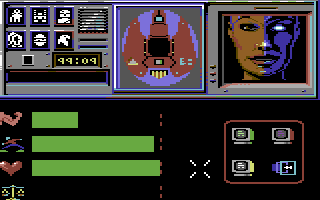
The player controls a team of six mercenaries, with only 100 minutes of real time at their disposal. Their mission? Defeat the evil General Zoff and rescue Ambassador Kryxix. Not the strongest of narratives, but it works. Each mercenary has different abilities. Some are best employed during the combat. Others could be used to open doors or interact with computers. The game was among the first strategies on the home computer to feature an entire icon-based interface. The players could also control it with the joystick. It was inspired by the one featured on Apple Lisa computers.
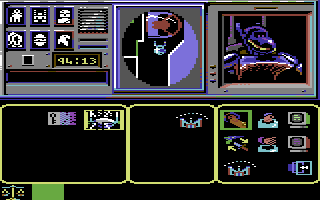
With great response from the press and the public, Steven Cain immediately began working on a sequel. It was released just a few months later. Enigma Force was a fascinating title all around. It largely maintains the design ideas from Shadowfire. Yet, trying to make the game more exciting, the developer got rid of the turn-based movement. Instead, the sequel uses a series of “queue commands” – not unlike the systems from games like The Sims. The player controls each mercenary separately and can seamlessly switch between them. It was received by the press with less acclaim, yet still stands as a fantastic sequel.
THE BARD’S TALE – SINGING FOR YOUR SUPPER
This game was one of the very first ultra-popular titles by Interplay Software. It was so well-received that it ended up being converted for several home computers of the time. While the team, responsible for it, went on to create many other interesting RPGs. The Commodore 64 version came out in 1985, developed by Brian Fargo and Michael Cranford. The peaceful town of Skara Brae is under attack by the evil wizard Mangar the Dark. It’s up to a party of adventurers to save the day, by solving quests, buying equipment and getting better at fighting.
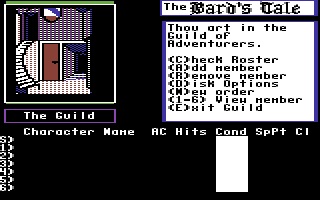
The Bard’s Tale is among the most classic first-person RPG experiences. The Wizardry series was also an obvious inspiration. While the movement is done in real time – all combat is turn-based. The player is free to roam the entire town, looking for enemies to fight and quests to solve. There are also many traditional dungeons to explore, with plenty of loot within. As well as a bit of an overworld. Naturally, among the various classes, the bard is the most interesting one. The profession offers access to a repertoire of special songs. These can lift the team’s spirits and greatly improve their chances of survival in the harsh world.
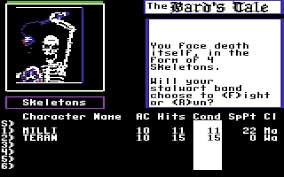
The second and the third game soon followed. Today, the original Bard’s Tale trilogy is often discussed as a whole – not as the individual titles. No surprise, since all its games are pretty similar in their high quality of gameplay. All of them are fondly remembered these days. On Commodore 64, the games made smart use of the limited graphical capabilities of the computer. As a result, the adventure is definitely no less enjoyable, when on other systems. Of course, today, it might be better to get a hold of the remake. Yet, the originals have aged pretty gracefully. Recently, a successful kickstart campaign has revived the series with a fourth chapter: The Bard’s Tale IV – Barrows Deep.
DOOMDARK’S REVENGE – FOLLOWING THE LORDS OF MIDNIGHT
Mike Singleton released Doomdark’s Revenge in 1986, as the first sequel to Lords of Midnight. A second title in the unfortunately short-lived series, it plays very similarly to the other games in its franchise. The main difference is its richer narrative tapestry, thick with mystery and intrigue. A web that gets more complex the further the player progresses through the game and the more characters they recruit.

Just like in the original, the player’s characters move during the day, while the opponent, Shareth – during the night. One particularly interesting mechanic is that, depending on the player’s choices, many characters might refuse to join the party. The heroes’ traits will also play a role in how the adventure proceeds. Some might be braver than others, while others may become more fearful overtime. To complement such a unique and inventive design, there’s a huge world to explore. I definitely recommend keeping a map.
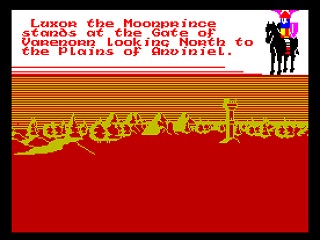
Singleton began working on the third title right after the release of the sequel. However, a publishing agreement got in the way, and he abandoned it. Years later, though, in 1995, Domark Software have released the third – and the final – game in the series. The title was, once again, Lords of Midnight. It wasn’t a remake, however, but a direct sequel to Doomdark’s Revenge. Singleton had been working on the original, unreleased, sequel project, to publish as the fourth chapter, before his death in 2012.
WASTELAND – THE ORIGINAL POST-APOCALYPTIC SIMULATOR
When the team led by Brian Fargo at Interplay finished the original The Bard’s Tale trilogy, they followed up on that success with another smash hit. Designed, among others, by Alan Pavlish and Ken St. André, Wasteland became a historic influence for many other RPGs. Its story was absolutely unique for the time. It was largely because of it that the game achieved its great fame, despite the brutal difficulty. The planet has gone through a nuclear apocalypse. The disaster has almost completely destroyed the human civilization, and a handful of survivors now battle each other for control of the remaining resources. The only law in the game’s harsh world is the law of the gun.
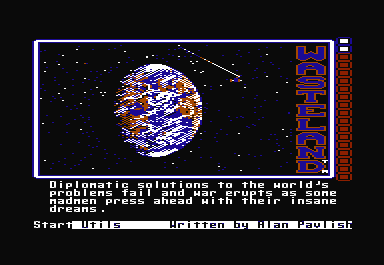
The player’s party consists of four Desert Rangers. A quick character creation process drops the heroes straight into the game. There isn’t much in terms of the narrative here. The idea is for the players to just go out and explore, learning more about the world. The final objective is to destroy the factory that produces human-killing robots. We’ll have to be wary of running into turn-based combat with such enemies as Nuke Pooches and Wasteland Warriors. When the game truly shines, it’s during the moments of pure exploration. Its universe contains a multitude of unique locations like the abandoned university campus full of mutant teenagers or the ominous city of Quartz. Still, the writing does not shy away from humor, especially in the book, which accompanies the gameplay.

The most well-known version of Wasteland is, probably, the one for Commodore 64. After its release, the series lay dormant for quite some time. Not least because of the release of a certain Interplay’s post-apocalyptic RPG (Fallout!). In 2014 the series came back to life with a second chapter, followed by a third one, in 2020. Indeed, the Nuke Pooches live to fight another day!
DEFENDER OF THE CROWN – CONQUER LANDS AND WIN BACK THE PRINCESS
Cinemware studio was a very interesting case in the late 80s. It has given the public an absolutely unique mix of titles, alternating between very high-quality graphics and out-there concepts. Some examples include the faux 50s horror B-movie It Came From The Desert and the unusual Rocket Ranger. With Defender of the Crown, the studio tried a sort of general “medieval lord of the round table simulator”. The game mixes multiple forms of gameplay, that do, together, make up for a rather strong package.
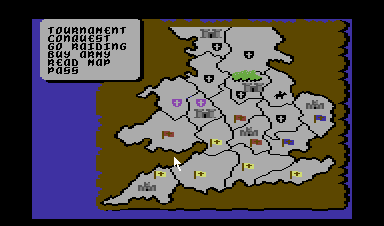
The player’s first objective is to conquer as many regions of England as possible. The game’s played in turns, and the main thing to do here is to defeat other lords’ armies. Yet, it also offers plenty of other gameplay flavors. There are exciting tournaments, played in first-person, for a true simulation experience. Not to mention the fun the players can have when attacking enemies’ castles during the 2D side-scrolling action sequences. The final reward for these brave deeds could indeed be a night with the princess. On Commodore 64 the game came on multiple floppies and offered exquisite graphics and fantastic music by Richard Joseph.
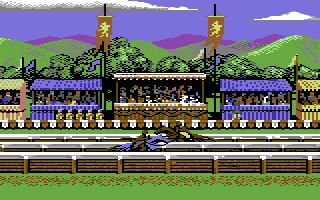
The game is currently available as freeware on the archived version of Cinemaware’s website. There is a sequel that had a botched release for the ill-fated Commodore CD32 in 1993. There’s also a mostly okay graphical update, released on PC and consoles back in 2003, called “Robin Hood – Defender of the Crown“. Finally, there was also a remake of sorts, for the more “casual” audience, developed in 2007. Sticking with the original is probably the best choice here.
THE ETERNAL DAGGER – THE RPG BEFORE DUNGEONS & DRAGONS
Strategic Simulations Inc. (or SSI, as it is most commonly known), was among the most prolific developers of turn-based wargames and RPGs on many home computers in the early 80s. This was especially true after the company managed to sign a deal with TSR Inc. in order to publish official Dungeons & Dragons titles. The Eternal Dagger, though, came before SSI started using the license. It is, instead, the 1987 follow-up to the original Wizard’s Crown, released during the previous year.
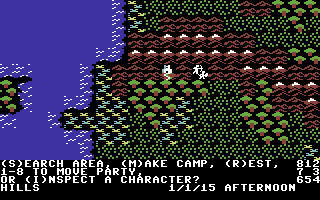
Designed by Paul Murray and Victor Penman – who also worked on the Buck Rogers series – the sequel works mostly the same as the original. It’s a top-down turn-based fantasy RPG, not unlike Ultima. The player’s task is to find the titular Eternal Dagger – the only item which will stop the demonic invasion. But, compared to the original, the follow-up introduces a way more detailed combat system. The characters have many options, during their turn, like sneaking, standing guard, etc. Plus, there are wizards with several spells and priests that can heal the party. Especially effective was the damage system, which highlighted wounds on a character’s body. For the time, this was nothing short of revolutionary.
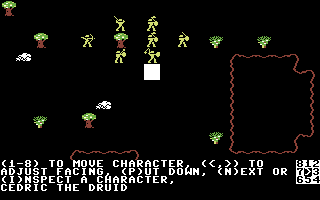
The players would definitely need to invest hours into this game to fully appreciate it. Along with a notepad to track down the map and the stats. It is certainly not an RPG for newcomers or casual fans. The Wizard’s Crown series actually ended with the release of The Eternal Dagger. However, it clearly was an inspiration for future SSI titles. Most notably – their Gold Box series (Pool of Radiance, in particular, comes to mind).

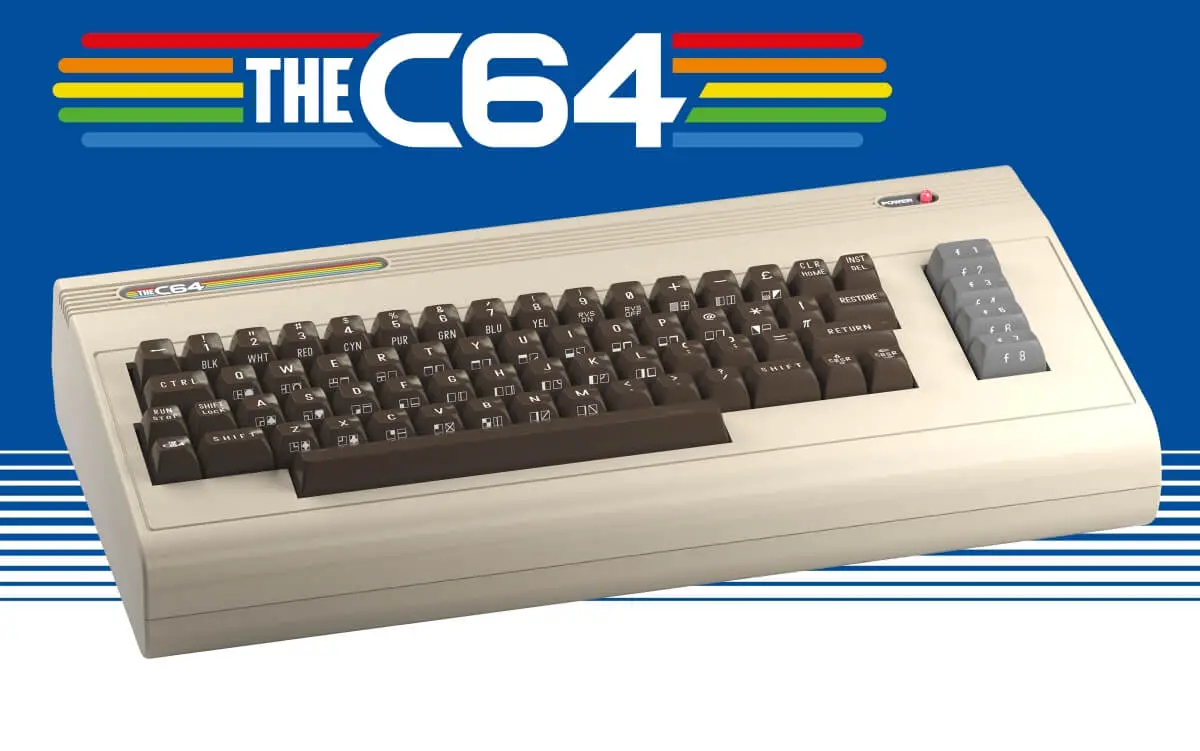






Nice list of games but one that is missing should be there – Laser Squad II
cane here to say that!
Thank you so much – I’ve been searching for this title for now 35+ years since I played it!
This was an epic machine after my VIC 20 – which originally came with a massive 3.5k memory 🙂 You could buy a 16k expansion pack for it after a few months though. Many hours spent on early strategy games on the C64 before moving onto the Amiga.
Where is sword of aragon?
🙂
Ultima series? Come on!!
No Laser Squad?
Coming up next: 7 turn based games on the C64.
All of them Laser Squad. 😀
No laser squad is an abomination.
Archon 2 was released for the C64. I played it recently.
Yup, corrected. Thx.
SSI Gold Box games.
Did you play it on the C64 or is it offered on another platform?
M.U.L.E.??? The greatest game of all!
One of the greatest RPG-game was ULTIMA IV and V. Ultima VI was terrible as it loaded so much. These should be in the list.
Shadow fire was absolutely game changing at the time, I remember being blown away by it. The other turn based strategies were pretty amazing but shadowfire was a big step up from them. Never beat it, but played it a lot and loved the soundtrack too. Awesome, edge of your seat gaming.
Weird assumption that the Commodore 64 wouldn’t be familiar to people from the US. What is your source on that?
They were sold in most department stores here and their headquarters were in West Chester, PA.
Honestly, that kinda distracted me from the rest of the article.
Yeah, the c64 was a major success in the US market as well.. It was the Amiga that was so drastically more successful in Europe than the US. In 1983=5 pretty much everyone i knew who was gaming was gaming on the c64. By around 1986-87 the focus had shifted to the NES for the most part, but still lots of people were gaming on c64.
You simply can’t make a C64 turn-based games list without mentioning SSI gold box series starting with Pool of radiance
What was that turn based game that you had to go to school or go to work rent apartment buy it etc..?